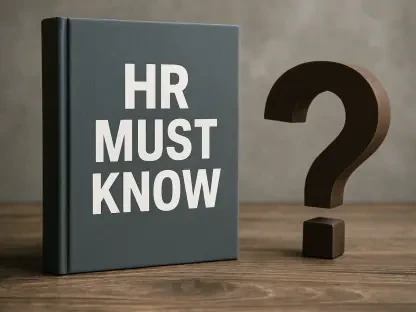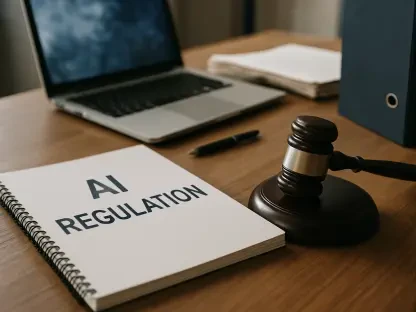In recent years, the implementation of diversity, equity, and inclusion (DEI) programs in workplaces has sparked significant discussion and debate. A new point of contention revolves around claims of reverse discrimination, where majority-group members allege that DEI initiatives create a hostile environment toward them. Understanding these legal challenges and their implications is crucial for both employers and employees navigating this evolving landscape. As DEI programs aim to create fairer and more inclusive workplaces, they also face scrutiny for potentially marginalizing members of traditionally dominant groups, making the legal balance between inclusivity and discrimination a tightrope walk for organizations.
The Rise of Reverse Discrimination Claims
Reverse discrimination claims are becoming more frequent as workplaces adopt DEI programs intended to foster inclusive environments. These claims are often made by majority-group members who feel marginalized by the heightened focus on race, gender, and other identity factors. Legal experts note an uptick in litigation, with plaintiffs arguing that DEI policies unfairly target or penalize them. This rise can be seen in various sectors, where employees allege that efforts to promote diversity inadvertently create biases against those from majority groups, thus raising significant concerns about the fairness and implementation of such programs.
High-profile cases, such as De Piero v. Pennsylvania State University, illustrate this trend. In this lawsuit, a White former professor alleged that the university’s focus on antiracism and related discourse made it difficult for him to perform his job duties. Although the court ultimately dismissed the claim, it highlighted the complexities of balancing DEI goals with individual grievances. This case, alongside others, underscores the importance of carefully crafting and executing DEI strategies to ensure they do not foster perceptions of exclusion, even as they aim to promote a more inclusive environment overall. Employers are increasingly tasked with finding this balance to maintain workplace harmony and legal compliance.
Judicial Analysis and Criteria
Courts are tasked with evaluating the severity and pervasiveness of alleged hostile work environments in reverse discrimination cases. Legal standards require that plaintiffs demonstrate conduct severe enough to alter the conditions of employment. This criterion remains stringent, as isolated or indirect exposure to DEI-related discussions is often deemed insufficient for substantiating hostile work environment claims. The judiciary’s rigorous standards mean that only the most blatant and pervasive instances of discrimination are likely to meet the legal threshold, focusing claims on genuinely oppressive and targeted behaviors rather than general discomfort with DEI efforts.
Judicial decisions, including those by Judge Wendy Beetlestone in the De Piero case, emphasize that discomfort with DEI initiatives does not automatically equate to harassment. For a claim to succeed, the conduct must involve a significant degree of hostility or discrimination, directly aimed at the plaintiff and creating a tangible impact on their work environment. This judicial rationale highlights the importance of context and intent behind DEI communications and activities, encouraging organizations to maintain transparency and inclusivity in their approach. Employers must ensure that DEI programs are implemented in a manner that supports dialogue rather than division.
Broader Implications for DEI Programs
Organizations committed to DEI must navigate these legal challenges while fostering inclusive workplaces. DEI initiatives are designed to promote equality and support underrepresented groups; however, they can also provoke backlash from majority-group employees. Ensuring that these programs are communicated and implemented thoughtfully is vital to mitigating potential claims of reverse discrimination. Employers must consider the perspectives of all employees to maintain a genuinely inclusive environment. This requires not only a commitment to DEI principles but also a nuanced understanding of the potential for perceived reverse discrimination.
Building a culture of open and respectful dialogue around DEI topics can help address concerns and prevent conflicts. Employers must also ensure that DEI efforts do not inadvertently create environments perceived as exclusionary or hostile to any group, maintaining a balanced approach supportive of all employees. This involves continuous evaluation and adaptation of DEI practices to reflect the evolving dynamics of workplace culture. By fostering inclusivity and understanding, organizations can create a positive work environment where all employees feel valued and respected, thereby reducing the risk of legal disputes related to DEI initiatives.
The Evolving Legal Landscape
In recent years, the introduction of diversity, equity, and inclusion (DEI) programs in workplaces has ignited substantial dialogue and debate. An emerging issue centers around claims of reverse discrimination, where members of majority groups argue that DEI initiatives foster a hostile environment for them. It’s essential for both employers and employees to grasp these legal challenges and their ramifications while navigating this dynamic terrain. While DEI programs strive to build fairer, more inclusive workplaces, they are also under scrutiny for the potential of sidelining individuals from traditionally dominant groups. This makes the legal balancing act between fostering inclusivity and avoiding discrimination a delicate and challenging task for organizations. Striking the right balance is crucial to ensure that these programs achieve their goals without leading to unintended consequences. Managing this complexity effectively is key for creating a truly inclusive workplace.









